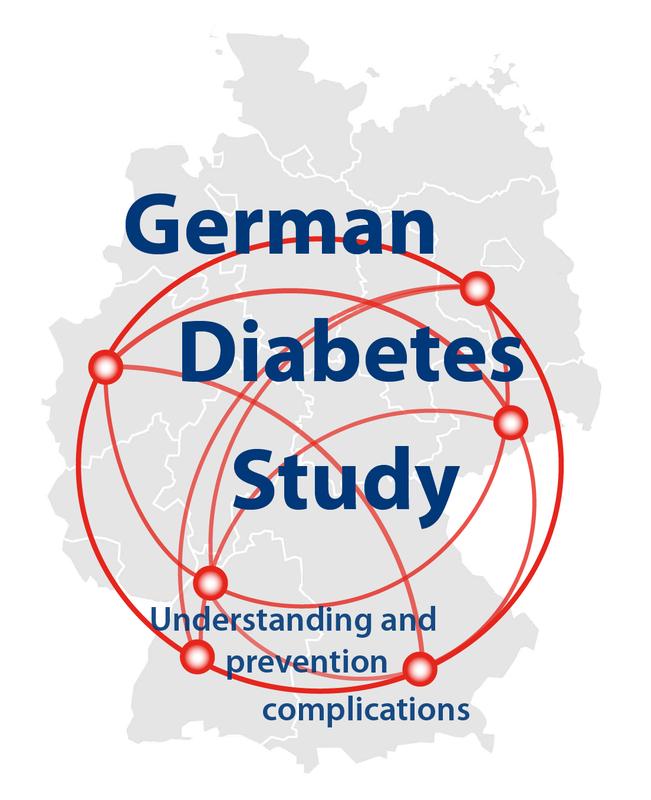New Classification? Subgroups of Type 2 Diabetes have Specific Risk of Diseases such as Fatty Liver and Neuropathy

German Diabetes Study (GDS) DDZ
The traditional classification of diabetes, mainly in type 1 and type 2 diabetes, has been challenged by studies from Scandinavia.
In the current issue of The Lancet Diabetes & Endocrinology, researchers from DDZ together with colleagues from DZD and University of Lund published a cluster analysis of diabetes allowing for phenotyping into subgroups, which extended the findings by showing that risks of certain diabetes-related complications segregated between diabetes subgroups already during the first five years after diagnosis.
These results come from the prospective observational multicenter German Diabetes Study (GDS), which follows people with newly diagnosed diabetes for more than 10 years.
“The new subgroups will help to develop precise prevention and tailored treatment strategies for the respective high-risk groups,” said Professor Michael Roden, principal investigator of GDS and director of DDZ and of the Division of Endocrinology and Diabetology at University Clinics of Düsseldorf. “This is an important step into precision medicine for diabetes and its comorbidities.”
Analysis and results
The GDS is conducted at eight locations throughout Germany within DZD, led by DDZ (www.deutsche-diabetes-studie.de). For this analysis, 1105 participants underwent cluster analyses based on the predictive marker GADA (glutamate decarboxylase antibody), age at diagnosis, body mass index (BMI), HbA1c level and HOMA indices (homeostasis model assessment) for insulin sensitivity and insulin secretion.
The researchers tested whether comprehensive phenotyping validates and further characterizes these clusters at diagnosis and during follow-up. They also analysed whether relevant complications and comorbidities associated with diabetes, including non-alcoholic fatty liver disease (NAFLD), liver fibrosis and diabetic neuropathy, differ among these clusters during the five-year follow-up period.
Based on the cluster algorithm, different subgroups with differing risks of complications could be identified: mild age-related diabetes (MARD, 35%), mild obesity-related diabetes (MOD, 29%), severe autoimmune diabetes (SAID, 22%), severe insulin-resistant diabetes (SIRD, 11%) and severe insulin-deficient diabetes (SIDD, 3%). The results show that two subgroups in particular have a high risk of complications. The highest risk of developing non-alcoholic fatty liver was in the cluster of “severe insulin-resistant diabetes” (SIRD); for diabetic neuropathy, the highest risk was in the subgroup “severe insulin-deficient diabetes” (SIDD).
Conclusion
Using the new diabetes classification, people with type 2 diabetes can be assigned to specific subgroups that exhibit significant metabolic changes and differing risk patterns for the development of diabetes-related complications. Individually targeted prevention and early treatment of specific subgroups of people with diabetes is a step towards precision medicine to delay or even prevent secondary diseases.
German Diabetes Study (GDS)
The aim of the German Diabetes Study is to identify markers for different forms of diabetes at an early stage in order to develop and apply new concepts for the prevention and treatment of secondary diseases. In this way, early warning signs of diabetes complications can be detected, and approved therapy methods can be compared in parallel.
This study will also investigate the influence of genes on the course of the disease. Participants in the German Diabetes Study receive free screenings for early detection of diabetes-associated diseases such as nerve, vascular and retinal damage. If you are interested in taking part in the study, please contact the Clinical Study Center at the German Diabetes Center (DDZ) at +49 (0)211/3382 209 or send an e-mail to studienzentrum@ddz.de.
Zaharia OP, Strassburger K, Strom A, Bönhof GJ, Karusheva Y, Antoniou S, Bódis K, Markgraf DF, Burkart V, Müssig K, Hwang J-H, Asplund O, Groop L, Ahlqvist E, Seissler J, Nawroth P, Kopf S, Schmid SM, Stumvoll M, Pfeiffer AFH, Kabisch S, Tselmin S, Häring HU, Ziegler D, Kuss O, Szendroedi J, Roden M: Risk of diabetes-associated diseases in subgroups of patients with recent-onset diabetes: a 5-year follow-up study. The Lancet Diabetes & Endocrinology. DOI: https://doi.org/10.1016/S2213-8587(19)30187-1
Media Contact
All latest news from the category: Life Sciences and Chemistry
Articles and reports from the Life Sciences and chemistry area deal with applied and basic research into modern biology, chemistry and human medicine.
Valuable information can be found on a range of life sciences fields including bacteriology, biochemistry, bionics, bioinformatics, biophysics, biotechnology, genetics, geobotany, human biology, marine biology, microbiology, molecular biology, cellular biology, zoology, bioinorganic chemistry, microchemistry and environmental chemistry.
Newest articles

Superradiant atoms could push the boundaries of how precisely time can be measured
Superradiant atoms can help us measure time more precisely than ever. In a new study, researchers from the University of Copenhagen present a new method for measuring the time interval,…

Ion thermoelectric conversion devices for near room temperature
The electrode sheet of the thermoelectric device consists of ionic hydrogel, which is sandwiched between the electrodes to form, and the Prussian blue on the electrode undergoes a redox reaction…

Zap Energy achieves 37-million-degree temperatures in a compact device
New publication reports record electron temperatures for a small-scale, sheared-flow-stabilized Z-pinch fusion device. In the nine decades since humans first produced fusion reactions, only a few fusion technologies have demonstrated…





















